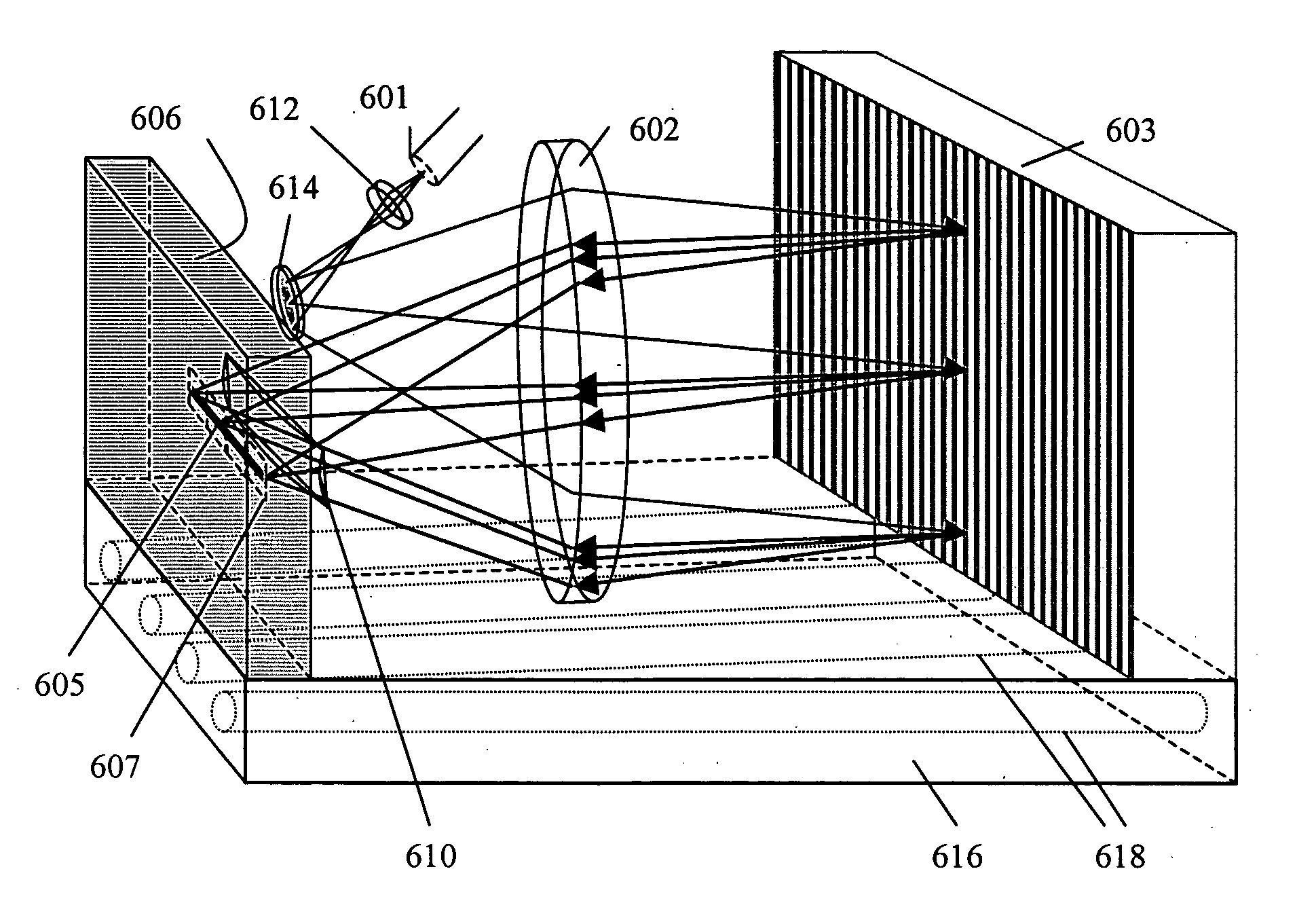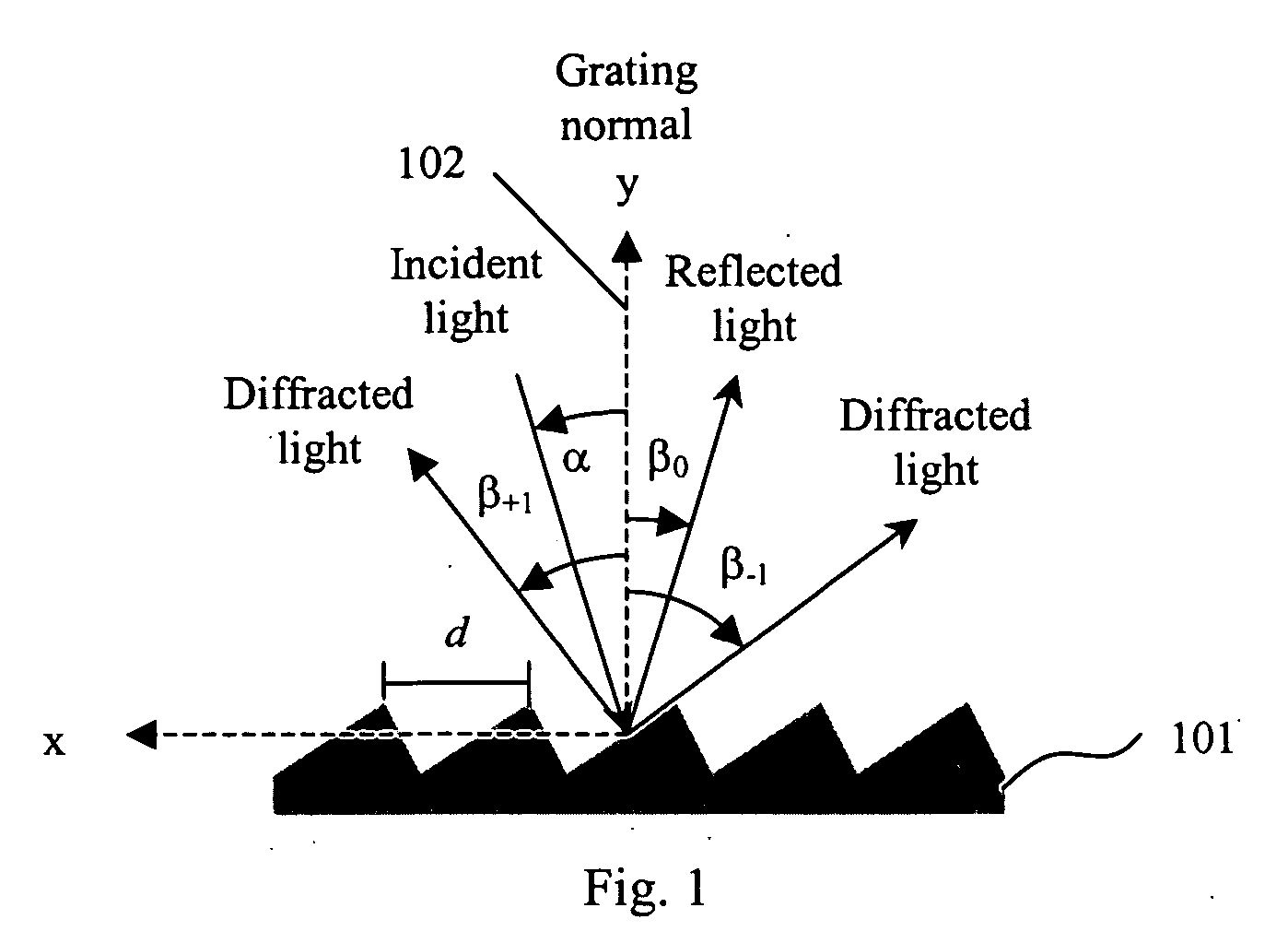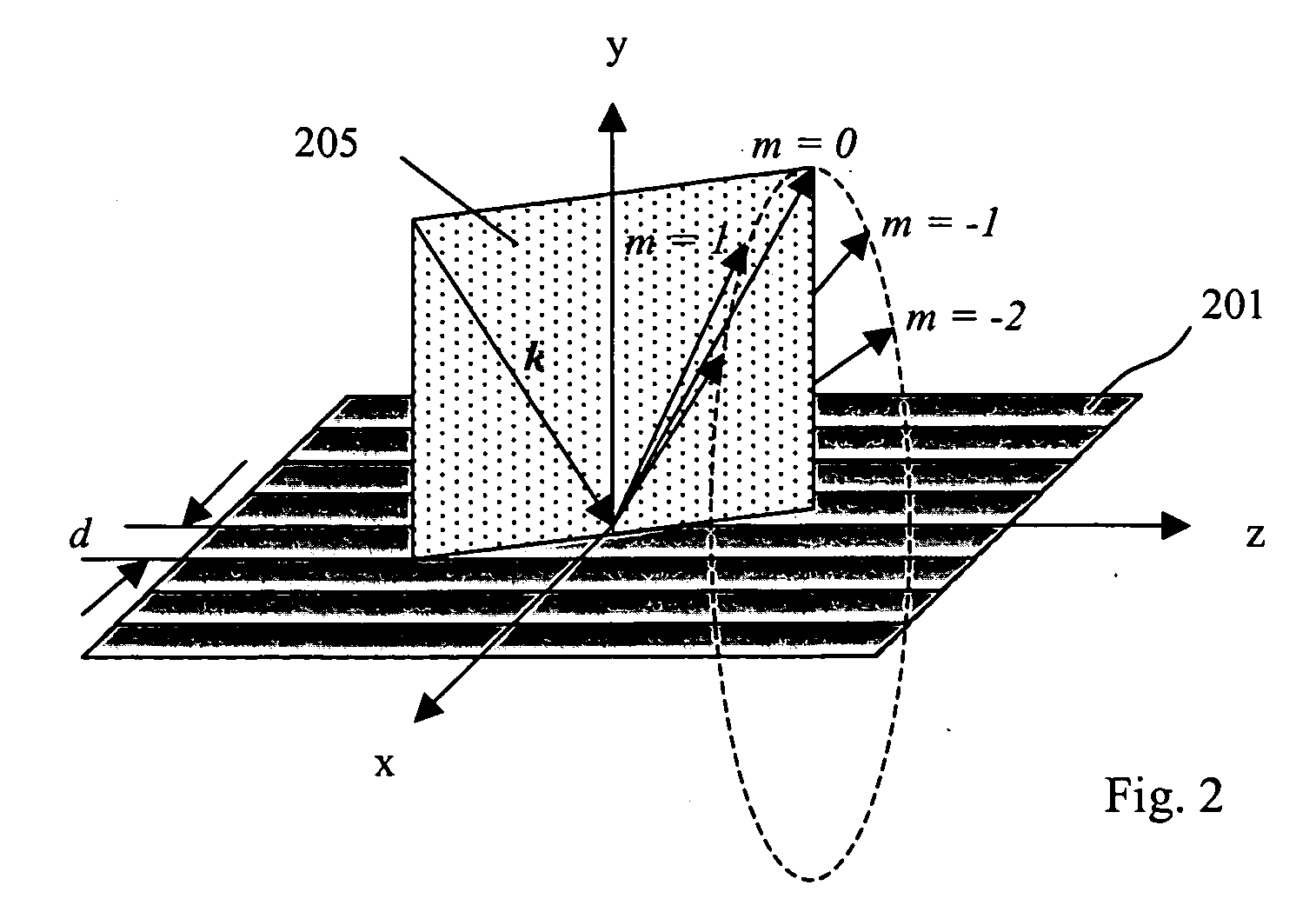Littrow spectrometer and a spectral domain optical coherence tomography system with a littrow spectrometer
a technology of optical coherence tomography and littrow spectrometer, which is applied in the field of optical spectrometers, can solve the problems of large spectrometer size, large incident beam distortion, and spectrometer output being very sensitive to the tip movement of the focused spectral line with respect to the linear array pixels, so as to reduce non-linearities
- Summary
- Abstract
- Description
- Claims
- Application Information
AI Technical Summary
Benefits of technology
Problems solved by technology
Method used
Image
Examples
Embodiment Construction
[0036] As is well known to those skilled in the art, a broad band light beam can be dispersed into its spectral components in a number of ways, including the use of a prism, a grating, an arrayed waveguide grating or a combination of optical filters. A grating is generally used in most spectrometers because of its high resolving power and hence high spectral resolution within a limited space. In many applications, a plane grating is preferred because of its low cost as compared to other more complex gratings such as a curved grating, a volume holographic grating, or a photonic crystal grating.
[0037]FIG. 1 shows the case of a plane reflection grating 101, the grating equation is given by
mλ=d(sin α+sin βm) (1)
where m is the diffraction order which is an integer, λ is the wavelength of light, d is the grating period, α is the angle of incidence, and βm is the angle of diffraction. The angle of incidence and angle of diffraction are measured from the grating normal 102, i.e. the da...
PUM
 Login to View More
Login to View More Abstract
Description
Claims
Application Information
 Login to View More
Login to View More - R&D
- Intellectual Property
- Life Sciences
- Materials
- Tech Scout
- Unparalleled Data Quality
- Higher Quality Content
- 60% Fewer Hallucinations
Browse by: Latest US Patents, China's latest patents, Technical Efficacy Thesaurus, Application Domain, Technology Topic, Popular Technical Reports.
© 2025 PatSnap. All rights reserved.Legal|Privacy policy|Modern Slavery Act Transparency Statement|Sitemap|About US| Contact US: help@patsnap.com



